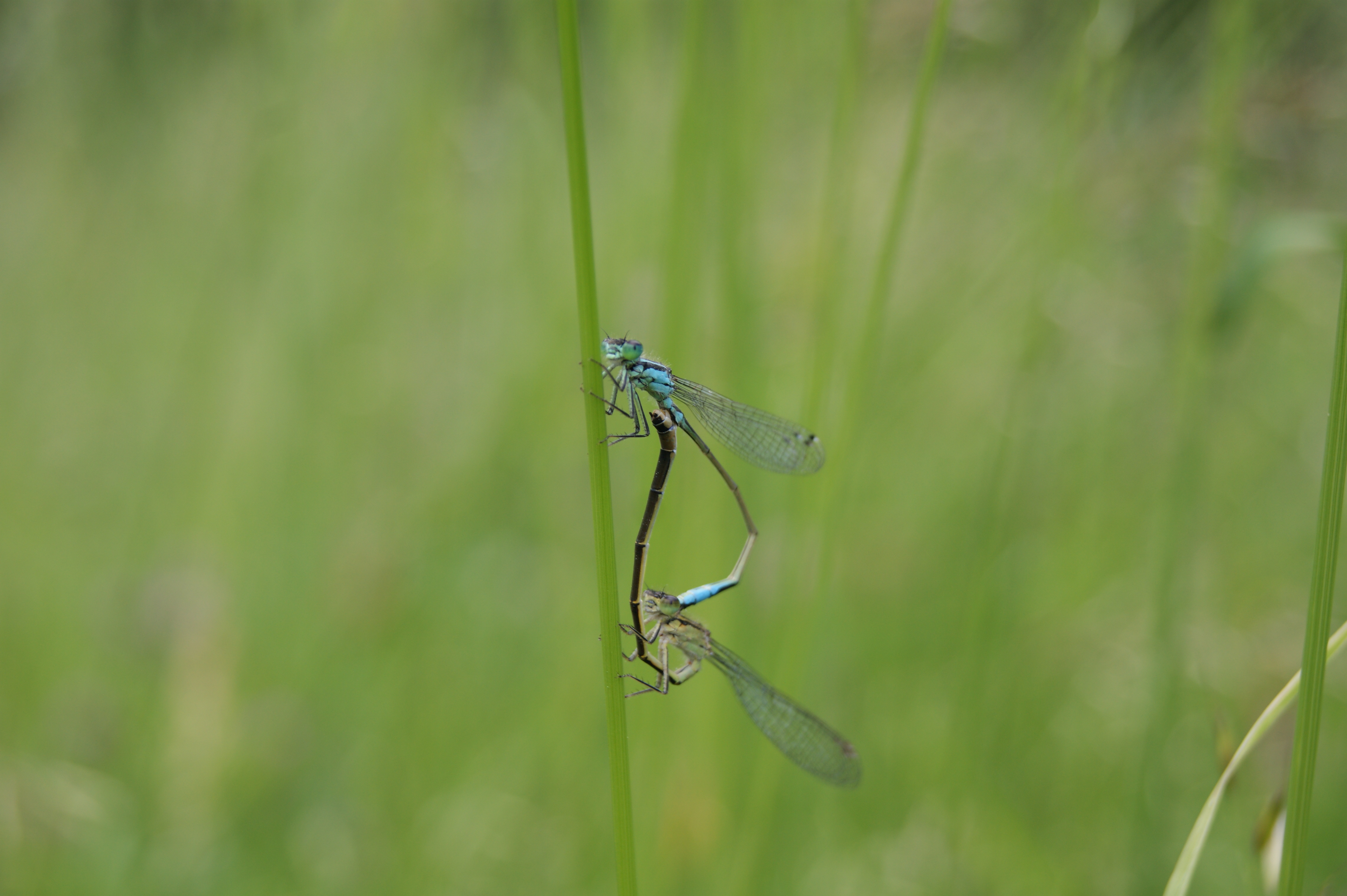Dragonflies (Nature, WPM)
Ponds, a large lake, a stream – there are many water reservoirs in the Wilanów gardens. This environment is very favourable for the occurrence of dragonflies. Dragonflies are bi-environmental insects, the adult forms are winged and live above water, while the larvae live at the bottom of reservoirs and flowing waters. Once they reach maturity, they emerge from the water. Usually, metamorphosis occurs on the leaves or stems of aquatic plants, i.e. the larva turns into an adult dragonfly. What happens is that a crack appears on the larva’s back and the adult insect comes out through it, and then for a long time it has to straighten its wings, which were previously hidden. Dragonflies are divided into equal-winged and differential-winged. Equal-winged are those that fold their wings behind their bodies when sitting. Variegated winged spread their wings sideways. Variegated winged dragonflies are definitely better fliers. Both in the larval and adult stages, dragonflies are predators. They are very useful. Variegated winged dragonflies can often be found in forests, even far from reservoirs, where they hunt forest pests. In the Wilanów gardens we can observe many species of dragonflies. Among the dragonflies, the most common are the blue-tailed dragonfly, the small red-eyed damselfly, the banded demoiselle, whose females are green and the males navy blue, and the blue-black azure and variable dragonflies. Among the varigated-winged dragonflies, you can find, for example, Aeshna isoceles and the migrant hawker, the ruddy darter, the four-spotted chaser, and the black-tailed skimmer.
Text by Julia Dobrzańska, PhD
